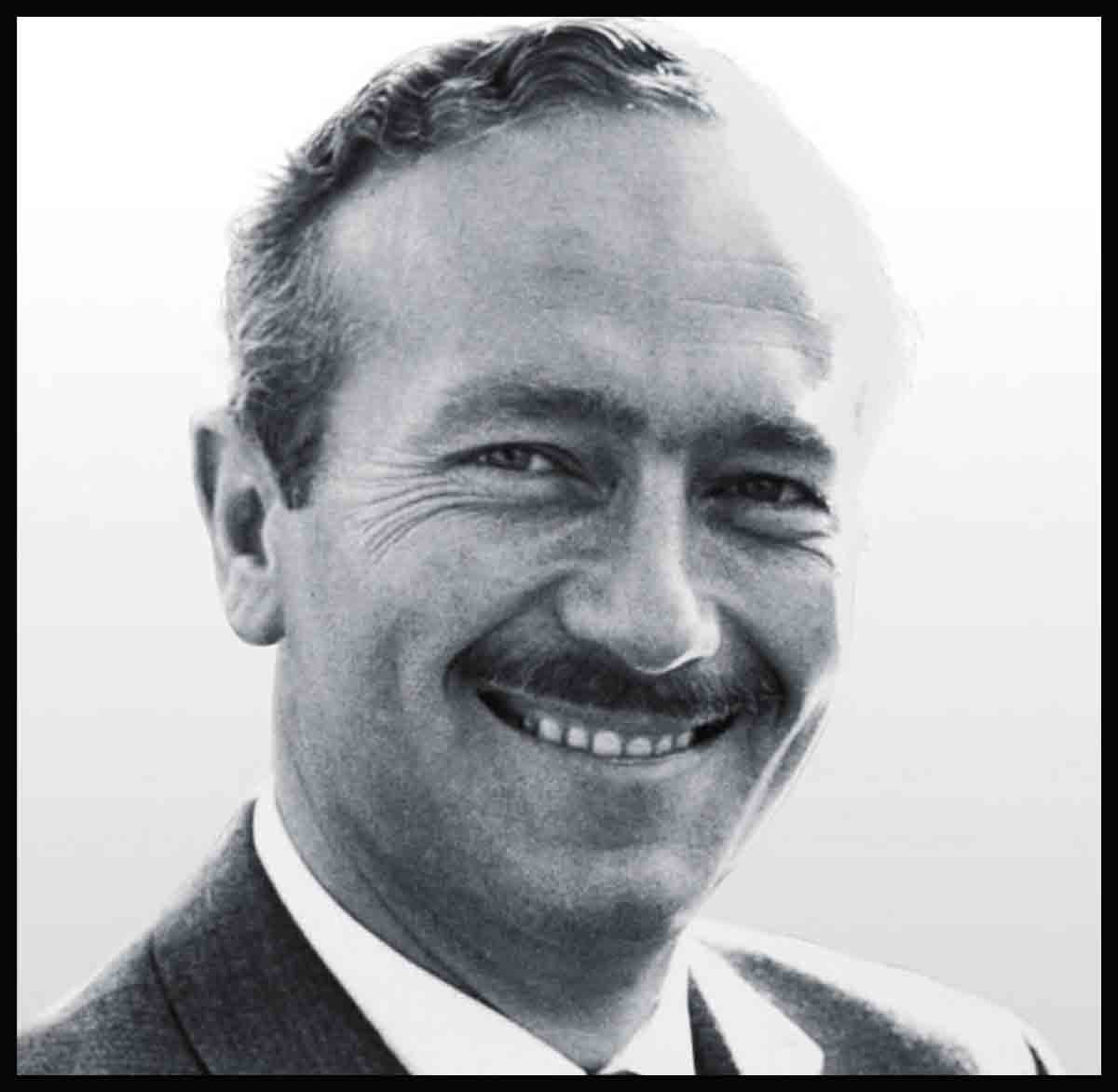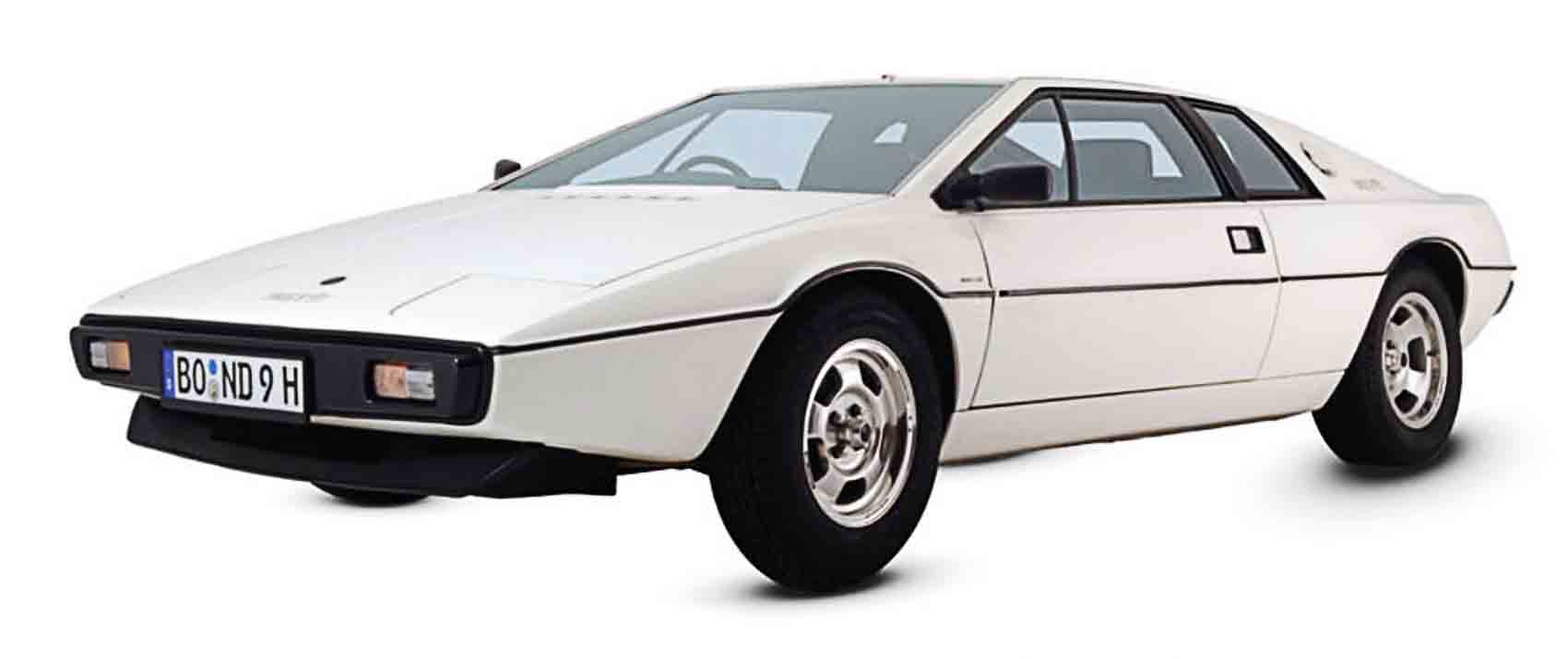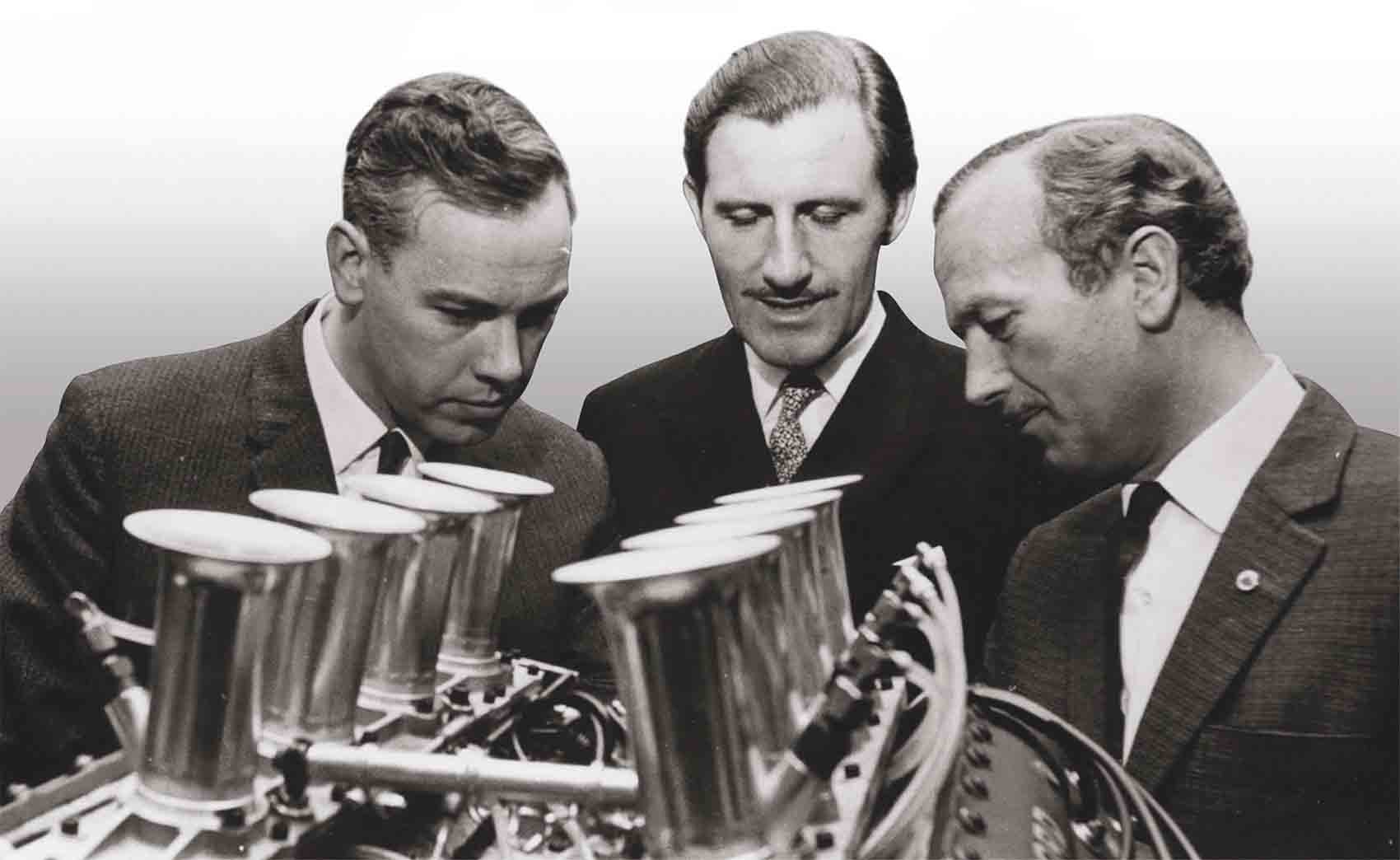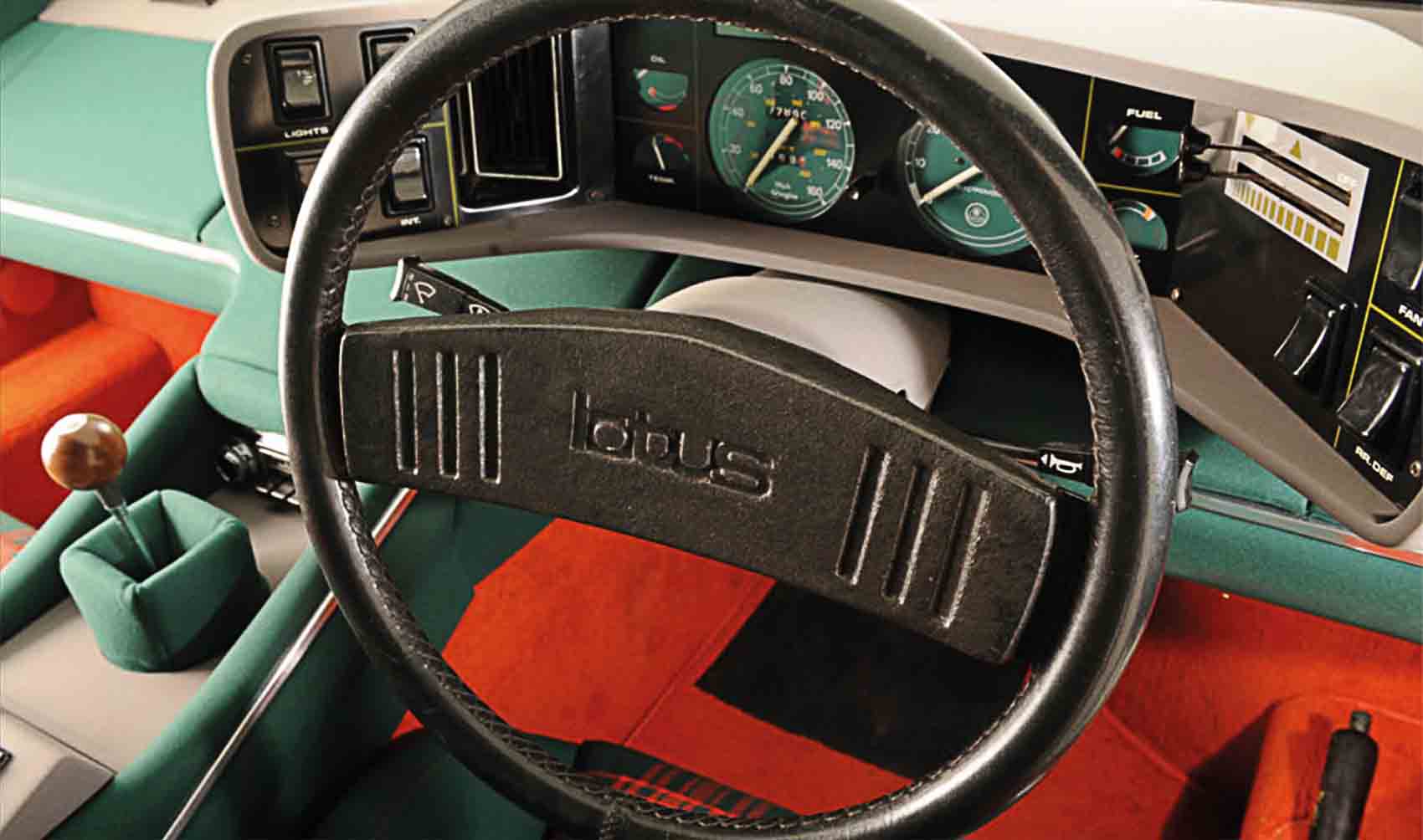
Great Designers—Colin Chapman
“A brilliant designer, but his intense desire to win would sometimes cause him to come too close to the edge.”
SIR STIRLING MOSS
One of the great visionaries of the car world, Colin Chapman was a born competitor. To fund his passion for building race-winning cars, he created a string of dazzlingly brilliant Lotus sports cars for road drivers. Chapman was a magician when it came to weight reduction and a master in the art of sharp handling, all of which he employed in his championship-winning constructions.
COLIN CHAPMAN NEVER CEASED in his single-minded drive to innovate and improve. This determination, combined with a genuine genius, made him a brilliantly intuitive engineer with a passion for racing and an unmatched ability to design championship-winning Grand Prix racing cars.
It all began very humbly in 1947. As an engineering student and part-time car dealer, Anthony Colin Bruce Chapman had been captivated by a trials racing event. Inspired, he turned an old unsold Austin Seven into a trials special, which he registered as a “Lotus”. Very soon he switched to racing on tarmac and was so successful in his self-built cars that other racers pleaded with him to build replicas. The experience persuaded him to form Lotus Engineering in 1952.

The Giugiaro-designed Espirit gained worldwide fame, starring in the James Bond film The Spy Who Loved Me. Unlike in the movie, the standard roadgoing Espirit was incapable of converting into a submarine.
The same year Chapman designed his MkVI, the first Lotus to have its own chassis. His ideology was to make everything as light as possible, and, by combining a lightweight chassis with the latest technological advances in suspension, he successflly distilled the essence of what makes a sports car. 1957’s Lotus Seven was perhaps the ultimate expression of this lightness-above-all approach, and the same essential design remains on sale today as the Caterham Seven.

Graham Hill (centre) and Colin Chapman (right) inspect an engine with Cosworth’s Mike Costin. The collaboration between the two men brought racetrack success, with Hill scoring a victory for Lotus in 1968.
Meanwhile, Chapman became more serious about racing cars. His MkVIII of 1954 and MklX of 1955 were formidable competition machines. Acceptance into the Society of Motor Manufacturers and Traders meant Lotus could now race—and win—at prestigious events such as Le Mans, competing first with the Lotus Eleven of 1956. Chapman’s compulsion to eliminate unnecessary weight led him to take a revolutionary approach with 1957’s Elite, which did away with a chassis completely. It was the first car in the world to have a fibreglass monocoque body/chassis supporting the mechanicals. This design ultimately proved impractical for road cars, so Chapman innovated again on his 1962 Elan. With its simple backbone chassis and jewel-like, twin-cam engine, it could run rings all around its contemporaries on the road. A seminal car in every way, it was also both profitable and popular, selling more than 11,000 examples.

Such success was partly built on Lotus’s Grand Prix wins. The company’s first-ever Formula 1 victory came in 1960 with Stirling Moss at the wheel, followed by F1 titles in 1963 and 1965 for Jim Clark, and in 1968 for Graham Hill. As racing cars made the switch from front to mid-mounted engines, so Chapman sought to do the same for road cars. The Europa—launched in 1966 as Lotus moved headquarters to Norfolk—was one of the world’s first mid-engined road cars and it set new standards in terms of handling.

Lotus was fast outgrowing the days of selling cars for home assembly in kit form. Its design ethos was evolving, too, since Colin Chapman only ever built cars that he wanted to drive, and his tastes were broadening. The 1974 Elite was Lotus’s first four-seater luxury sports car, and it marked the company’s move towards a new era of mature sophistication and aspiration—It was becoming the British equivalent of Porsche.
TRIUMPH AND TRAGEDY
Then came the Esprit, a superb mid-engined sports car styled by Giorgetto Giugiaro, and once again one of the sharpest-handling cars of its generation. Indeed, the Esprit was a marvel in both concept and execution, ensuring that it would remain in production for another 28 years until 2004. Disaster struck in 1982 when Chapman suffered a fatal heart attack. In the wake of his death, Lotus sought external investment and did consultancy work. General Motors bought Lotus in 1986, beginning a period of rising and falling fortune as the company was sold to Bugatti, then on to the Malaysian firm Proton.
However, Chapman’s legacy of innovation never left Lotus. The 1996 Elise returned Lotus to its roots. Here was a car whose light weight, stripped-out feel, and innovative technology would truly have made Colin Chapman a contented man.
Career highlights
> 1948 Colin Chapman joins the RAF and briefly becomes a pilot before returning to civilian life
> 1952 Chapman founds Lotus Engineering, based behind his father’s pub in north London, to make sports cars
> 1957 The iconic Elite is the world’s first-ever fibreglass monocoque, and the stripped-down Lotus Seven is produced
> 1962 The new Elan defines sports-car qualities for the modern era
> 1963 Jim Clark wins Lotus’s first F1 title in the monocoque F1 car, the Type 25

The fast, elegant, and lightweight Elan epitomized Chapman’s philosophy of lowering weight. With four-wheel independent suspension and rack-pinion steering, the car was also technically advanced.
> 1968 Graham Hill takes the F1 crown for Lotus in the 49—the first car to use its engine as a stressed chassis member
> 1976 Mid-engined Esprit marks a high point in handling finesse and endures for almost 30 years in production
> 1978 The Lotus 79, designed by Chapman, pioneers the use of “ground effect” aerodynamics in F1
> 1982 Chapman dies of a heart attack, aged just 54
It is a quote. The Classic Car Book – The Definitive Visual History 2016




